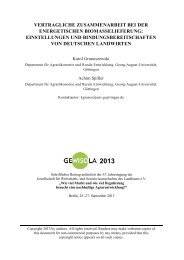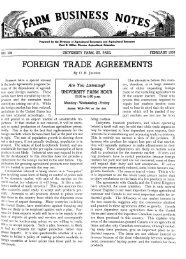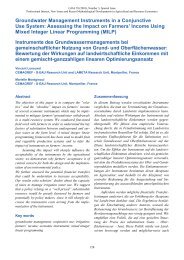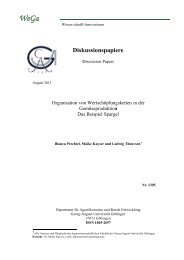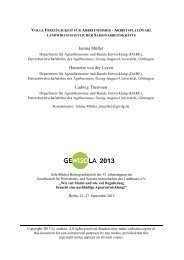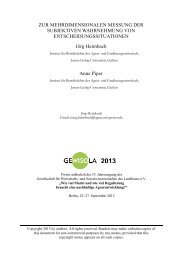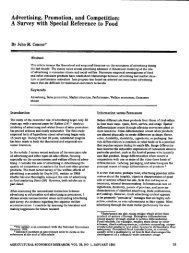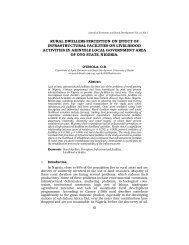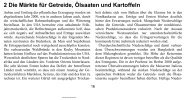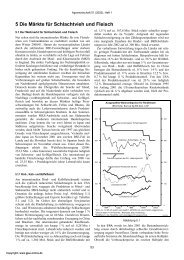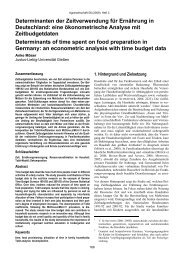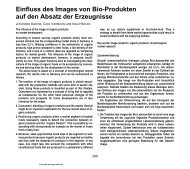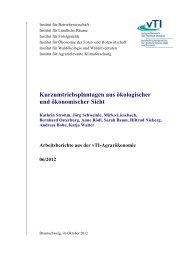District Institutes of Education and Training - Teacher Education
District Institutes of Education and Training - Teacher Education
District Institutes of Education and Training - Teacher Education
You also want an ePaper? Increase the reach of your titles
YUMPU automatically turns print PDFs into web optimized ePapers that Google loves.
<strong>District</strong> <strong>Institutes</strong> <strong>of</strong> <strong>Education</strong> <strong>and</strong> <strong>Training</strong>: A Comparative Study in Three Indian States<br />
Box 5.3: Lok Jumbish training, third day 6.7.99 Summary <strong>of</strong> maths<br />
session<br />
Discussion <strong>and</strong> explanation <strong>of</strong> the competencies covered in the book. First <strong>of</strong><br />
all MT (V) asked the teachers about the book’s special qualities. <strong>Teacher</strong>s gave<br />
points both in favour <strong>and</strong> against the book, noting questions not covering the<br />
particular competency for which they have been framed. While discussing<br />
competencies, teachers were asked to demonstrate how they teach those<br />
concepts in class.<br />
Role <strong>of</strong> MTs: MTs showed grasp <strong>of</strong> content <strong>and</strong> their approach was also<br />
participatory. MT (K) was engaging <strong>and</strong> didn’t react with any critical remark<br />
even when 1-2 teachers contradicted him for nothing. In making children learn<br />
numbers, MTs stressed the importance <strong>of</strong> song by actions. Home work was<br />
given.<br />
Role <strong>of</strong> teachers: Most teachers were participating <strong>and</strong> asked questions,<br />
expressed their views, were not hesitant in doing things. Here, for most <strong>of</strong> the<br />
teachers, passive receiving wasn't observed.<br />
Activity-based training for new textbooks by Santrampur DIET<br />
The research team observed training <strong>of</strong> over 100 Resource Persons organised by<br />
Santrampur DIET in July 1999 to introduce them to the new Std.1 textbooks that<br />
would later be rolled out across the State, where they would train a further 3300<br />
teachers. There were no specified aims or objectives for this programme, or outline<br />
to share with participants; on the first day, they were told:<br />
Today we will take one chapter from Gujarati <strong>and</strong> maths, on the second, third<br />
<strong>and</strong> fourth day we will take 3 chapters from each <strong>of</strong> the textbooks <strong>and</strong> on the<br />
last day 2 chapters. Thus we have to cover 24 lessons during this training<br />
(GUJ/SNT 27.7.99)<br />
The people invited to give inputs ranged from DIET staff to representatives from the<br />
DPEP, <strong>of</strong>ficers <strong>of</strong> the <strong>Education</strong> Department <strong>and</strong> a leading figures in the State Resource<br />
Group who had also been part <strong>of</strong> the textbook writing team. Without exception, these<br />
persons all modelled activities, sang songs, <strong>and</strong> danced – thus demonstrating to teachers<br />
that the image <strong>of</strong> a teacher can <strong>and</strong> should embrace such diverse approaches.<br />
The programme focused on familiarisation with the textbook, practising activities<br />
<strong>and</strong> making teaching learning materials. It was interspersed with speeches<br />
addressing motivational issues: ‘We all are devoted people but what we require is<br />
encouragement’. The approach <strong>of</strong> this training was to model lessons <strong>and</strong> prepare<br />
participants for their later roles:<br />
DFID 107



